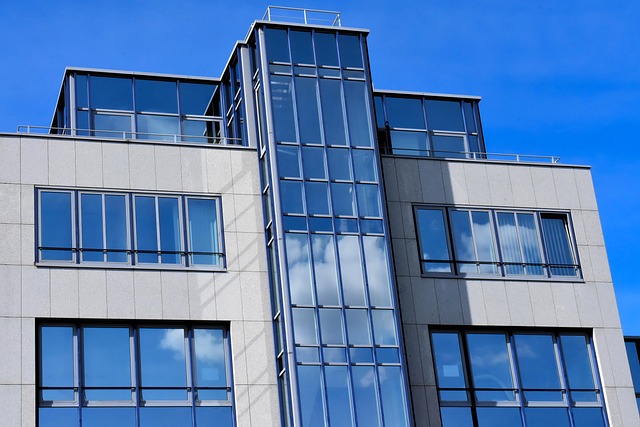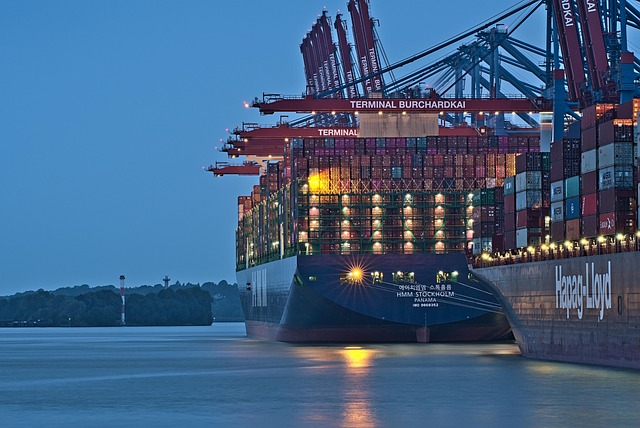Colorado's commercial property lending sector supports a diverse economy with tailored financing for mixed-use development projects. Unique challenges include complex nature and market fluctuations, but strong local economy aids access to capital. Lenders offer flexible terms and creative models, while government incentives promote investment in sustainable urban growth models like revitalized downtowns. Case studies highlight successful mixed-use developments driving community prosperity and attracting investors.
“Unleashing the Potential of Mixed-use Development: A Comprehensive Guide to Financing in Colorado
Colorado’s vibrant real estate landscape is characterized by thriving mixed-use developments, blending residential, commercial, and retail spaces. This article delves into the intricacies of financing these complex projects, focusing on commercial property lending within the state. We explore key factors influencing funding decisions, diverse financing options, risk management strategies, and the supportive government incentives available. Through insightful case studies, we highlight successful mixed-use ventures, offering a comprehensive roadmap for navigating this dynamic market.”
- Understanding Commercial Property Lending in Colorado
- Factors Influencing Mixed-Use Development Financing
- Types of Funding Options for Mixed-Use Projects
- Navigating Risks and Mitigation Strategies
- Government Incentives and Support in Colorado
- Case Studies: Successful Mixed-Use Developments
Understanding Commercial Property Lending in Colorado

Commercial property lending in Colorado plays a pivotal role in shaping the state’s diverse economy, catering to various sectors from tech startups to traditional retail. The market is characterized by a unique blend of natural beauty and urban dynamism, influencing financing options and strategies. Lenders in Colorado offer tailored solutions for mixed-use development projects, recognizing the state’s growing demand for housing, office spaces, and retail outlets.
Understanding this landscape requires a grasp of local regulations and market trends. Commercial property lending here often involves creative financing models, such as flexible terms and adjustable rates, to accommodate the unique needs of developers and investors. With a robust economy and a thriving real estate sector, Colorado presents an attractive opportunity for those seeking to invest in commercial properties, making it a key region within the broader context of commercial property lending nationwide.
Factors Influencing Mixed-Use Development Financing

Mixed-use development projects in Colorado often face unique financing challenges due to their complex nature, combining residential and commercial components. Several factors significantly influence access to capital for such ventures. One key aspect is the local real estate market’s health and trends. Strong commercial property lending standards in Colorado can make it easier to secure funding, given the state’s thriving economy and robust commercial sector. Lenders are more inclined to invest in projects with solid rental income potential from mixed-use spaces.
Another critical factor is the project’s design, efficiency, and market appeal. Well-designed, sustainable, and aesthetically pleasing mixed-use developments have better chances of attracting tenants and buyers, thereby enhancing their financial viability. Lenders also consider the developer’s experience, reputation, and track record in similar projects, as it signals risk level and project management capabilities. Additionally, state and local incentives, grants, or tax benefits for mixed-use development can play a substantial role in financing these ventures, making them more attractive to potential investors.
Types of Funding Options for Mixed-Use Projects

Mixed-use development projects in Colorado often require a diverse range of funding options to bring their vision to life. Commercial property lending plays a pivotal role in financing these ventures, offering various strategies tailored to the unique needs of mixed-use developments. One prominent option is traditional bank loans, which provide long-term financing for both residential and commercial components. These loans are secured by the underlying real estate, making them attractive for developers seeking stability and predictable repayment terms.
Additionally, private equity investments have gained traction in the Colorado market. Investors who specialize in mixed-use developments offer funding in exchange for a stake in the project’s profits. This approach can be particularly beneficial when combined with tax incentives, grants, or public-private partnerships, further enhancing the financial viability of these projects. Such diverse funding sources contribute to the vibrancy and growth of Colorado’s commercial property landscape.
Navigating Risks and Mitigation Strategies

Navigating risks is a critical aspect of mixed-use development financing, especially in dynamic markets like Colorado’s vibrant commercial property lending sector. Developers must carefully assess potential challenges, such as market fluctuations, construction delays, and regulatory changes, which can significantly impact project timelines and budgets. One effective strategy to mitigate these risks involves structuring robust financial reserves to cushion against unforeseen expenses. Diversifying investment portfolios across various asset classes also proves beneficial; this approach ensures that a single development or market segment does not pose an existential risk.
Additionally, engaging in comprehensive due diligence is paramount. Thorough analysis of the project’s feasibility, market demand, and potential environmental factors can uncover hidden risks early on. Lenders and investors should collaborate closely to develop tailored risk management plans. By combining robust financial planning with meticulous research, mixed-use development projects in Colorado can be steered towards successful completion, ensuring a solid return on investment for all stakeholders involved.
Government Incentives and Support in Colorado

Colorado has been a hub for mixed-use development, thanks in part to robust government incentives and support. The state offers various programs tailored to encourage commercial property lending for mixed-use projects, recognizing their economic significance. These initiatives include tax credits and breaks designed to offset the costs of construction and renovation, making it an attractive proposition for investors.
The Colorado Department of Revenue, for instance, provides a range of incentives for developers and lenders engaging in mixed-use ventures. These measures not only stimulate development but also foster sustainable growth by promoting a balanced blend of residential, commercial, and retail spaces. The state’s commitment to these programs underscores its commitment to fostering a vibrant economy and diverse real estate landscape through commercial property lending Colorado.
Case Studies: Successful Mixed-Use Developments

Mixed-use developments have proven to be a successful and sustainable model for urban growth, particularly in vibrant markets like Colorado. Case studies highlight several notable examples across the state that showcase the benefits of integrating residential, commercial property lending, retail, and sometimes industrial spaces within a single project. For instance, the revitalized downtown areas of Denver and Boulder feature mixed-use complexes that have attracted young professionals and families, fostering thriving communities. These developments not only offer diverse amenities but also contribute to the local economy by increasing foot traffic and stimulating business growth.
One such successful project is the Union Station development in Denver, which transformed a former railroad campus into a bustling hub featuring residential lofts, office spaces, hotels, restaurants, and retail stores. This mixed-use transformation has become a model for urban renewal, attracting investors seeking commercial property lending opportunities with strong returns. Similarly, the Pearl District in Boulder showcases a blend of residential, retail, and light industrial spaces, creating a vibrant neighborhood that has propelled the area’s desirability and economic vitality. These examples illustrate how well-planned mixed-use developments can drive community prosperity and create lasting value for investors in the Colorado market.
Mixed-use development financing in Colorado is a dynamic landscape shaped by various factors, including understanding commercial property lending, navigating risks, and leveraging government incentives. This article has explored these key aspects, from the types of funding options available to successful case studies. By recognizing the influences on financing and adopting effective risk mitigation strategies, developers can unlock opportunities within Colorado’s thriving commercial property market. The combination of robust funding, careful planning, and government support positions mixed-use projects as promising investments for both investors and communities alike.
